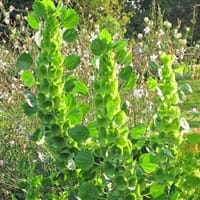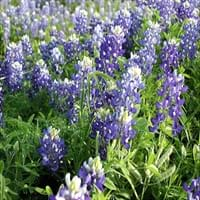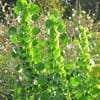Type
Perennial
Flowering Plants
Origin
Mediterranean, Western Asia
Texas
Types
Not Available
Lupinus adsurgens, Lupinus affinis, Lupinus albicaulis
Habitat
Cultivated Beds
Loamy soils, Sandy areas
USDA Hardiness Zone
9-11
3-8
AHS Heat Zone
9 - 1
9 - 1
Sunset Zone
H1, H2, 1a, 1b, 2a, 2b, 3a, 3b, 4, 5, 6, 7, 8, 9, 10, 11, 12, 13, 14, 15, 16, 17, 18, 19, 20, 21, 22, 23, 24
1a, 1b, 2a, 2b, 3a, 3b, 4, 5, 6, 7, 8, 9, 10, 11, 12, 13, 14, 15, 16, 17, 18, 19, 20, 21, 22, 23, 24
Habit
Upright/Erect
Clump-Forming
Flower Color
White, Green, Light Pink
White, Blue, Purple
Flower Color Modifier
Bicolor
Bicolor
Fruit Color
Not Available
Not Available
Leaf Color in Spring
Green
Green, Sea Green
Leaf Color in Summer
Green
Green, Sea Green
Leaf Color in Fall
Green
Not Available
Leaf Color in Winter
Light Green
Light Green
Leaf Shape
Cone shaped
Oblanceolate to oval
Plant Season
Summer, Fall
Spring
Sunlight
Full Sun
Full Sun, Partial Sun
Type of Soil
Loam
Loam, Sand
The pH of Soil
Acidic, Neutral
Neutral, Alkaline
Soil Drainage
Well drained
Well drained
Bloom Time
Summer, Late Summer, Early Fall, Fall
Early Spring, Spring, Late Spring
Tolerances
Drought
Drought
Where to Plant?
Container, Ground
Container, Ground, Pot
How to Plant?
Seedlings
Cuttings, Seedlings
Plant Maintenance
Medium
Medium
Watering Requirements
Do not water excessively
Allow to dry out slightly between watering, Average Water Needs, Do Not over Water
In Summer
Lots of watering
Lots of watering
In Spring
Moderate
Moderate
In Winter
Average Water
Average Water
Soil pH
Neutral
Slightly Alkaline
Soil Type
Fertile
Fertile, Well drained
Soil Drainage Capacity
Fertile
Well drained
Sun Exposure
Partial shade
Partial Sun
Pruning
Remove damaged leaves, Remove dead branches, Remove dead leaves
Remove damaged leaves, Remove dead branches, Remove dead leaves
Fertilizers
All-Purpose Liquid Fertilizer
All-Purpose Liquid Fertilizer
Pests and Diseases
Red blotch
Red blotch
Plant Tolerance
Drought
Drought
Flower Petal Number
Single
Single
Fragrant Bark/Stem
Yes
No
Foliage Texture
Medium
Medium
Foliage Sheen
Matte
Matte
Attracts
Not Available
Butterflies, Not Available
Allergy
Not Available
Toxic
Aesthetic Uses
Showy Purposes
Showy Purposes
Beauty Benefits
Not Available
Not Available
Edible Uses
No
Insignificant
Environmental Uses
Air purification
Air purification, Soil Enrichment
Medicinal Uses
Not Available
Not Available
Part of Plant Used
Flowers, Leaves
Flowers
Other Uses
Used as Ornamental plant
Used as Ornamental plant, Used for bedding in gardens
Used As Indoor Plant
Yes
Insignificant
Used As Outdoor Plant
Yes
Yes
Garden Design
Groundcover, Showy Tree
Container, Hanging Basket
Botanical Name
MOLUCCELLA
LUPINUS subcarnosus
Common Name
Bells-of-Ireland
Bluebonnet, Texas Bluebonnet
In Hindi
Moluccella
Bluebonnet Plant
In German
Moluccella
Blaue Lupine Pflanze
In French
Moluccella
Bluebonnet Plante
In Spanish
Molucella
Planta bluebonnet
In Greek
Molucella
Bluebonnet φυτών
In Portuguese
Molucella
Bluebonnet de Plantas
In Polish
Molucella
Bluebonnet roślin
In Latin
Molucella
Planta Bluebonnet
Phylum
Magnoliophyta
Magnoliophyta
Class
Magnoliopsida
Magnoliopsida
Family
Lamiaceae
Fabaceae
Clade
Angiosperms, Asterids, Eudicots
Angiosperms, Eudicots, Rosids
Tribe
Not Available
Genisteae
Subfamily
Not Available
Faboideae
Number of Species
Not Available
Season and Care of Bells-of-Ireland and Bluebonnet
Season and care of Bells-of-Ireland and Bluebonnet is important to know. While considering everything about Bells-of-Ireland and Bluebonnet Care, growing season is an essential factor. Bells-of-Ireland season is Summer and Fall and Bluebonnet season is Summer and Fall. The type of soil for Bells-of-Ireland is Loam and for Bluebonnet is Loam, Sand while the PH of soil for Bells-of-Ireland is Acidic, Neutral and for Bluebonnet is Neutral, Alkaline.
Bells-of-Ireland and Bluebonnet Physical Information
Bells-of-Ireland and Bluebonnet physical information is very important for comparison. Bells-of-Ireland height is 60.00 cm and width 25.40 cm whereas Bluebonnet height is 60.96 cm and width 30.48 cm. The color specification of Bells-of-Ireland and Bluebonnet are as follows:
Bells-of-Ireland flower color: White, Green and Light Pink
Bells-of-Ireland leaf color: Green
Bluebonnet flower color: White, Blue and Purple
- Bluebonnet leaf color: Green and Sea Green
Care of Bells-of-Ireland and Bluebonnet
Care of Bells-of-Ireland and Bluebonnet include pruning, fertilizers, watering etc. Bells-of-Ireland pruning is done Remove damaged leaves, Remove dead branches and Remove dead leaves and Bluebonnet pruning is done Remove damaged leaves, Remove dead branches and Remove dead leaves. In summer Bells-of-Ireland needs Lots of watering and in winter, it needs Average Water. Whereas, in summer Bluebonnet needs Lots of watering and in winter, it needs Average Water.





